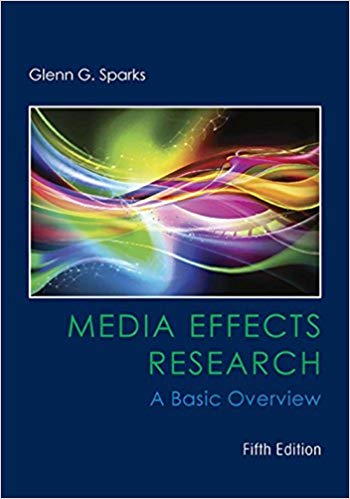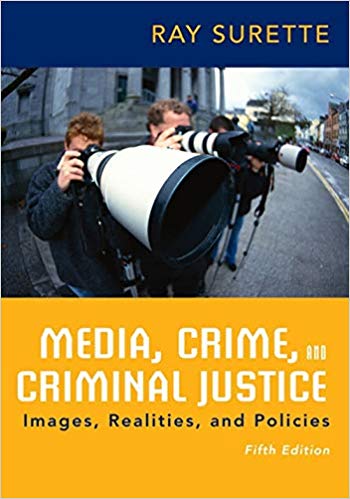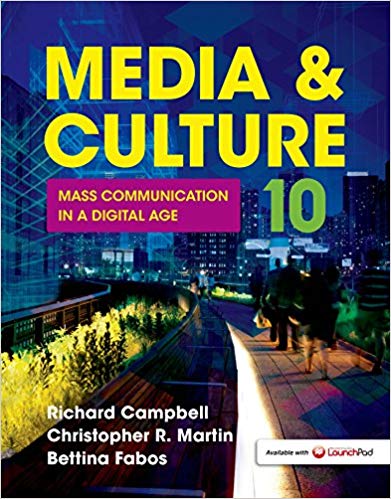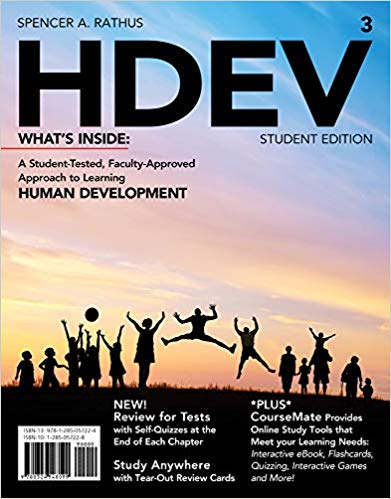Media Effects Research A Basic Overview 5th Edition by Glenn G. Sparks – Test Bank
Do you need test banks fast? eTestBank.net is the best test bank website for you! Download your test bank right after you pay. No waiting!
Why eTestBank.net is Great:
✅ Instant Download:
Get your test bank right away after payment.
✅ Unlimited Downloads:
Download your test bank anytime and as many times as you want.
✅ 24/7 Live Help:
We are here to help you all day, every day.
✅ Guaranteed Delivery:
If you don’t get the download right away, we will send it to you in 3 to 6 hours.
Potential Exam Questions for Media Effects Research: A Basic Overview (5th Edition) by Glenn G. Sparks
NOTE: Correct answers are underlined.
Chapter 2
- According to the text, which of the following best captures the meaning of the term “systematic” in the context of content analysis?
- an unambiguous set of rules or procedures for coding the message content is specified
- multiple researchers are able to examine the same content and come to their own,independent conclusions
- certain aspects of the content are coded and tallied in some quantitative way whileothers are interpreted by appealing to verbal protocols
- content that actually appears uninterpreted in the message can be coded
- the analysis follows a cybernetic approach to coding—which is concerned withsystems and sub-systems of content that occurs in multiple layers
- According to the text, why might a researcher not be overly impressed in a content analysis if the coding agreement between two coders was 90% or .90?
- The coders could have been cheating and discussing their coding decisions with each other instead of doing them independently.
- The content to be coded might have been unusually easy to code.
- Since the rule of thumb for coding agreement is .70 or 70%, a 90% agreementonly surpasses the threshold by a minimum amount.
- If the coding only involved two categories, the coders would agree by chance50% of the time—thus making 90% agreement less impressive than it sounds.
- It would indicate that the content coded by the coders was virtually identical—something that a good content analysis attempts to avoid.
- According to the text, when Sarah Coyne and her colleagues studied the content of novels intended for adolescent readers, they found that the vast majority of substance abuse incidents in those novels were:
- not associated with any particular consequences—positive or negative.
- associated with positive consequences.
- associated with negative consequences.
- incidents in which adults abused substances—not the adolescents.
- incidents in which the substance abuser was a female.
© 2016 Cengage Learning®. May not be scanned, copied or duplicated, or posted to a publicly accessible website, in whole or in part.
- Based on your understanding of the text discussion, if a survey researcher draws a sample of college juniors in 2002 and compares their responses to a sample of college juniors in 1992, which type of survey design was employed?a. cross-sectional b. cohort
c. correlational d. panele. trend
- Based on your understanding of the text discussion, which of the following statements best captures the meaning of: r = .-.61, p < .002?
- two variables were correlated and as one variable increases, the other tends to also increase; the probability that this would happen by chance alone is less than 2 times in 100; the relationship is significant
- two variables were correlated and as one variable increases, the other tends to also increase; the probability that this would happen by chance alone is less than 2 times in 1,000; the relationship is NOT significant
- two variables were correlated and as one variable increases, the other tends to decrease; the probability that this would happen by chance alone is less than 2 times in 1,000; the relationship is significant
- two variables were correlated and as one variable increases, the other tends to decrease; the probability that this would happen by chance alone is less than 2 times in 1,000; the relationship is NOT significant
- none of the above captures the meaning of the expression
- Based on your understanding of the text discussion, if a measure of TV viewing was related to a measure of obesity according to the following expression (r = .30, p < .05), which of the following would be TRUE?
- 9% of the variance in obesity is explained or accounted for by knowing the values of TV viewing.
- 30% of the variance in obesity is explained or accounted for by knowing the values of TV viewing.
- 5% of the variance in obesity is explained or accounted for by knowing the values of TV viewing.
- 25% of the variance in obesity is explained or accounted for by knowing the values of TV viewing.
- 3% of the variance in obesity is explained or accounted for by knowing the values of TV viewing.
© 2016 Cengage Learning®. May not be scanned, copied duplicated, or posted to a publicly accessible website, in whole or in part.
7. According to the text, when Jennifer Ahern and her colleagues surveyed citizens of New York City after the events of September 11, 2001, they concluded that:
- exposure to media coverage of traumatic events is probably not associated with any increase in stress levels on the part of media consumers.
- exposure to media coverage of traumatic events probably reduced stress levels on the part of media consumers.
- exposure to media coverage of traumatic events could possibly increase stress levels on the part of media consumers.
- there was less coverage of the traumatic events in the New York media market when compared to other markets around the country.
- reenacted media violence; fictional depictions of violence are just as harmful to viewers as reality depictions.
- According to the text, when Nicholas Bowman and Ron Tamborini conducted an experimental investigation of the mood-management theory, they concluded that in general:
- people in negative moods DO NOT benefit from playing a computer game.
- people in negative moods DO benefit from playing a computer game.
- their results were ambiguous due to the lack of a random sample of participants.
- their results were ambiguous due to the lack of random assignment toexperimental conditions.
- the theory of mood management is completely disconfirmed.
- According to the text, when critics of the experimental method raise the point that many experiments are “artificial” and that results cannot be generalized to any meaningful situation outside the lab, they are expressing concern about which type of experimental validity.
- statistical validity
- internal validity
- external validity
- construct validity
- the theory of mood management is completely disconfirmed
- According to the text, random assignment to experimental conditions theoretically:
- makes the experimental groups equivalent just prior to exposure to the experimental manipulation.
- guarantees the ability to generalize the results to the larger population.
- guarantees that the experiment will yield statistically significant results.
© 2016 Cengage Learning®. May not be scanned, copied or duplicated, or posted to a publicly accessible website, in whole or in part.
- makes the experimental groups different so they can be equalized by the manipulation of the independent variable.
- is impossible to carry out without an error.











